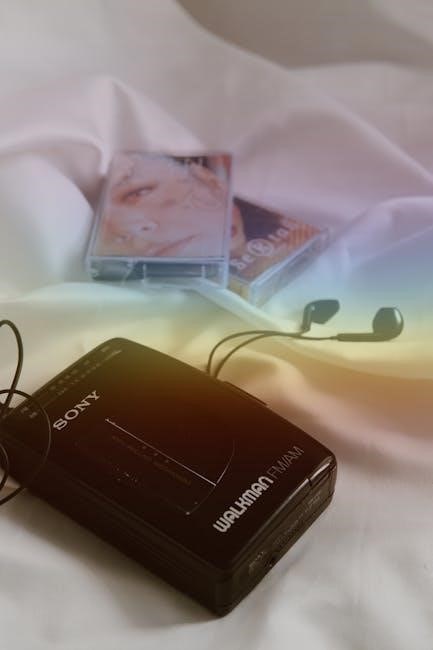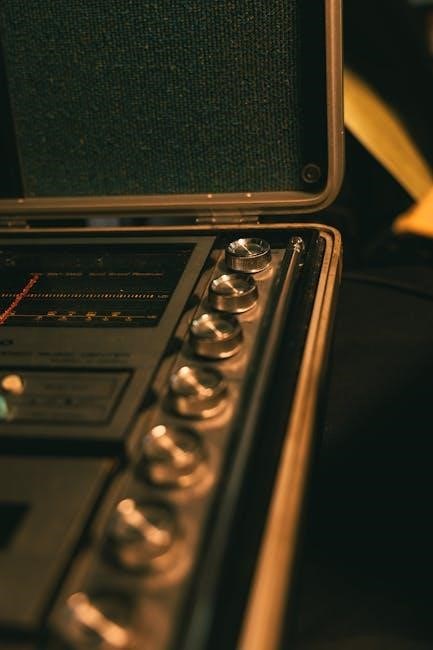Welcome to Ishkur’s Guide to Electronic Music, a legendary interactive map created by Kenneth John Taylor. This nostalgic resource explores electronic music genres from 1929 onward, offering a satirical yet insightful journey through the evolution of synthwave, techno, and more. Perfect for both newcomers and veteran fans, it remains a timeless tribute to electronic music’s diverse history.

Historical Background of the Guide
Created by Kenneth John Taylor in the late 90s, Ishkur’s Guide debuted in 2000 with version 1.0, followed by version 2.0 in 2003, ending updates in 2005.
Early Development and Purpose
Created by Kenneth John Taylor, aka Ishkur, the guide debuted in 2000 as version 1.0, with version 2.0 following in 2003 and version 2.5 in 2005. Initially built using Flash, it was a groundbreaking, interactive resource for exploring electronic music’s vast subgenres. The guide’s purpose was to chronologically map the evolution of electronic music, from its origins in the 1920s to the early 2000s. It featured an interactive flowchart-style interface, allowing users to navigate through genres like House, Techno, Breakbeat, and Trance, tracing their influences and offshoots. Satirical yet informative, it became a go-to resource for both newcomers and enthusiasts. Despite its eventual discontinuation, the guide remains a nostalgic artifact of early internet culture, offering a unique perspective on electronic music’s history.

Evolution of Versions (2000-2005)
Between 2000 and 2005, Ishkur’s Guide underwent significant updates, reflecting electronic music’s rapid evolution. Version 1.0, released in 2000, laid the groundwork with a basic Flash interface. Version 2.0 in 2003 expanded coverage, adding more genres and refining the navigation. The final version, 2.5, introduced improved interactivity and updated content, becoming a comprehensive resource. Despite its popularity, the guide was eventually abandoned in 2005 as Flash technology became obsolete. Its legacy endured, inspiring updates and community-led preservation efforts to ensure its availability for future generations.

Key Features of the Old Version
The old version of Ishkur’s Guide featured an interactive genre map, covering over 100 subgenres, with detailed descriptions and chronological evolution. Its Flash-based interface allowed users to explore relationships between genres, making it both educational and entertaining. The guide was praised for its user-friendly design and comprehensive coverage of early electronic music styles.
Interactive Genre Map and Navigation
The old version of Ishkur’s Guide featured a groundbreaking interactive genre map that visually represented the evolution of electronic music. Users could navigate through a vast, interconnected web of genres, exploring their origins and relationships. The map was divided into seven main categories: House, Techno, Breakbeat, Jungle, Hardcore, Downtempo, and Trance. Each genre was accompanied by detailed descriptions, humorous commentary, and historical context. The navigation was intuitive, allowing users to click on genres to discover subgenres, influences, and notable artists. This interactive design made the guide both educational and entertaining, offering a unique way to understand the complexities of electronic music. The map’s visual style, with its colorful lines and boxes, became iconic, making it a beloved tool for music enthusiasts and newcomers alike.
Coverage of Early Electronic Music Genres

Ishkur’s Guide to Electronic Music old version provides an extensive exploration of early electronic music genres, tracing their origins back to the 1920s. It delves into pioneers like Kraftwerk and Tangerine Dream, showcasing how their work laid the foundation for modern electronic music. The guide covers seminal genres such as synth-pop, ambient, and krautrock, offering detailed descriptions and historical context. Early techno and house movements are also highlighted, with a focus on their cultural and musical significance. By mapping these genres chronologically, the guide bridges the gap between early innovations and later subgenres like trance and jungle. This comprehensive approach makes it a vital resource for understanding the roots of electronic music, blending education with nostalgia for both enthusiasts and newcomers alike. Its historical depth ensures a fascinating journey through the evolution of electronic sound.

Impact and Legacy of Ishkur’s Guide
Ishkur’s Guide to Electronic Music is a definitive resource that educated countless fans, shaping electronic music culture and inspiring future explorations of its rich history.

Influence on Electronic Music Culture

Ishkur’s Guide to Electronic Music has profoundly shaped electronic music culture, serving as an essential educational tool for fans and artists alike. Its interactive, genre-map format introduced listeners to obscure and mainstream styles, fostering a deeper understanding of electronic music’s diversity. The guide’s satirical yet insightful commentary added a unique flavor, making it both entertaining and informative. By chronicling the evolution of genres, it became a go-to reference for musicians, producers, and enthusiasts, influencing how people discovered and appreciated electronic music. Its nostalgic appeal and historical significance have cemented its role as a cultural artifact, inspiring new explorations and preserving the legacy of electronic music’s rich history.
Nostalgic Value and Historical Significance

Challenges and Preservation Efforts
Flash Dependency and Obsolescence
Community-Led Preservation Initiatives

